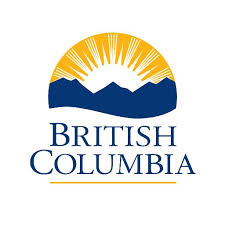végétation
Type of resources
Available actions
Keywords
Contact for the resource
Provided by
Years
Representation types
Update frequencies
status
Service types
-

Dataset featuring the spatial location of vegetation management (silvicultural herbicides) treatments on provincial Crown Lands. The dataset is a historical record of silvicultural herbicide treatments which is used to inform the history of forest management activities on provincial Crown lands.
-

In 2013, the Ontario Ministry of the Environment, Conservation and Parks initiated an integrated baseline environmental data collection program in the Ring of Fire region located in Ontario’s Far North. The program was designed to establish baseline or reference environmental conditions for this region of Ontario. The program was comprised of four main integrated components: - surface water (lakes and streams) monitoring (2013-2018) - peat pore water (groundwater) monitoring (2013-2018) - terrestrial (vegetation and soil) monitoring (2013-2018) - air monitoring (2015-2018) Data collection activities were generally located within 60 km of the Noront Resources/Cliffs Natural Resources mining exploration camp established near Koper Lake and within the Attawapiskat, Ekwan, and Winisk River watersheds. The baseline monitoring activities were integrated or co-located where possible to provide more comprehensive datasets on the dominant ecosystems for this part of Ontario.
-
Les cartes du potentiel et des limitations des terres pour l'agriculture peuvent être utilisées à l'échelle régionale pour aider la prise de décisions sur l'amélioration des terres et le remembrement des exploitations agricoles, pour l'élaboration de plans d'aménagement et pour la préparation d'évaluations équitables des terres. Pour plus d'information, consulter : http://ouvert.canada.ca/data/fr/dataset/0c113e2c-e20e-4b64-be6f-496b1be834ee
-
Les cartes du potentiel et des limitations des terres pour l'agriculture peuvent être utilisées à l'échelle régionale pour aider la prise de décisions sur l'amélioration des terres et le remembrement des exploitations agricoles, pour l'élaboration de plans d'aménagement et pour la préparation d'évaluations équitables des terres. Pour plus d'information, consulter : http://ouvert.canada.ca/data/fr/dataset/0c113e2c-e20e-4b64-be6f-496b1be834ee
-

CryoGeographic Consulting, in association with Palmer Environmental Consulting Group Inc., provided Yukon Energy, Mines and Resources and Yukon Environment with the results of the mapping and classification of wetlands and adjacent upland habitat in the Indian River valley and its major tributaries. This report and its accompanying map set have been updated to reflect study area expansion and additional field reconnaissance completed in the summer of 2017. Interpretation of shallow water wetlands within disturbed landscapes was completed by Ducks Unlimited Canada and incorporated. Five classes of wetlands are distinguished - bogs, fens, swamps, marshes and shallow water - based on field investigations and interpretation of high-resolution aerial photography and satellite imagery. The accompanying report w it h full metadata can be downloaded from: [https://yukon.ca/en/mapping-and-classifying-wetlands-indian-river-valley-yukon](https://yukon.ca/en/mapping-and-classifying-wetlands-indian-river-valley-yukon) Distributed from [GeoYukon](https://yukon.ca/geoyukon) by the [Government of Yukon](https://yukon.ca/maps) . Discover more digital map data and interactive maps from Yukon's digital map data collection. For more information: [geomatics.help@yukon.ca](mailto:geomatics.help@yukon.ca)
-

The current and most detailed version of the approved corporate provincial digital Biogeoclimatic Ecosystem Classification (BEC) Zone/Subzone/Variant/Phase map (version 12, September 2, 2021). Use this version when performing GIS analysis regardless of scale. This mapping is deliberately extended across the ocean, lakes, glaciers, etc to facilitate intersection with a terrestrial landcover layer of your choice
-

A list of the various 'regional' (zone/subzone/variant/phase) ecological units of the current biogeoclimatic ecosystem classification. At this 'regional' level, vegetation, soils and topography are used to infer the climate and to identify geographic areas that have relatively uniform climate. These geographic areas are termed biogeoclimatic units. The basic biogeoclimatic unit is the Subzone. These units are grouped into Zones and may be further subdivided into variants based on further refinements of climate (e.g., wetter, drier, snowier). The map units of the Biogeoclimatic map are mapped to the highest possible thematic resolution - subzone or variant. In some cases, where further sampling is required to define the unit climatically, polygons are labelled as an undifferentiated unit (e.g. CWH un)
-

The 1 cm resolution vegetation digital height model was extracted using a bare earth model and digital surface model (DSM) derived from unmanned aerial vehicle (UAV) imagery acquired from a single day survey on July 28th 2016, in Cambridge Bay, Nunavut. The mapping product covers 525m2 and was produced by Canada Centre for Remote Sensing /Canada Centre for Mapping and Earth Observation. The UAV survey was completed in collaboration with the Canadian High Arctic Research Station (CHARS) for northern vegetation monitoring research. For more information, refer to our current Arctic vegetation research: Fraser et al; "UAV photogrammetry for mapping vegetation in the low-Arctic" Arctic Science, 2016, 2(3): 79-102. http://www.nrcresearchpress.com/doi/abs/10.1139/AS-2016-0008
-
La donnée a été créée ou dérivée à partir d'images de véhicules aériens non habités (UAV) acquises à partir d'une enquête d'une journée, le 28 juillet 2016, à Cambridge Bay, au Nunavut. Cinq points de contrôle provenant d'un système de positionnement différentiel global ont été positionnés dans les coins et au centre de l'étude de la végétation. Les jeux de données suivants couvrent une superficie de 525m2 et ont été produits par le Centre canadien de télédétection / Centre canadien de cartographie et d'observation de la Terre: - UAV modèle d'hauteur de la végétation, Cambridge Bay, Nunavut - UAV modèle numérique de surface (MNS) dans Cambridge Bay, Nunavut - Parcelle de végétation - UAV orthomosaïque de Cambridge Bay, Nunavut - Parcelle de végétation L'enquête sur les UAV a été menée en collaboration avec La Station canadienne de recherche dans l’Extrême-Arctique (SCREA) pour la recherche sur la surveillance de la végétation nordique. Pour plus de renseignement, consultez nos travaux de recherche actuels: Fraser et al; ""UAV photogrammetry for mapping vegetation in the low-Arctic"" Arctic Science, 2016, 2(3): 79-102, 10.1139/as-2016-0008 http://www.nrcresearchpress.com/doi/abs/10.1139/AS-2016-0008
-

This feature delineates forest and vegetation stands in the Yukon at a scale of 1:5,000. It is an operational level forest inventory (as opposed to a management level). This inventory has been completed in various stages, between 2013 and 2014, and delineation via softcopy from stereo images acquired in the years 2007 and 2012. The aerial images used for the Haines Junction region (Champagne and Aishihik Traditional Territory) had a ground sample distance (GSD) of 40 cm and were collected in both color and infrared. The aerial imagery in the southcentral Yukon were 1:40,000 black and white hard copy images, scanned at 60 microns or approximately 1m GSD. Distributed from [GeoYukon](https://yukon.ca/geoyukon) by the [Government of Yukon](https://yukon.ca/maps) . Discover more digital map data and interactive maps from Yukon's digital map data collection. For more information: [geomatics.help@yukon.ca](mailto:geomatics.help@yukon.ca)
 Arctic SDI catalogue
Arctic SDI catalogue